Speakers
📢 Here are the current speakers we have for this event. We will also hear from you – the event is all about taking part.
The Importance of Tool Consolidation
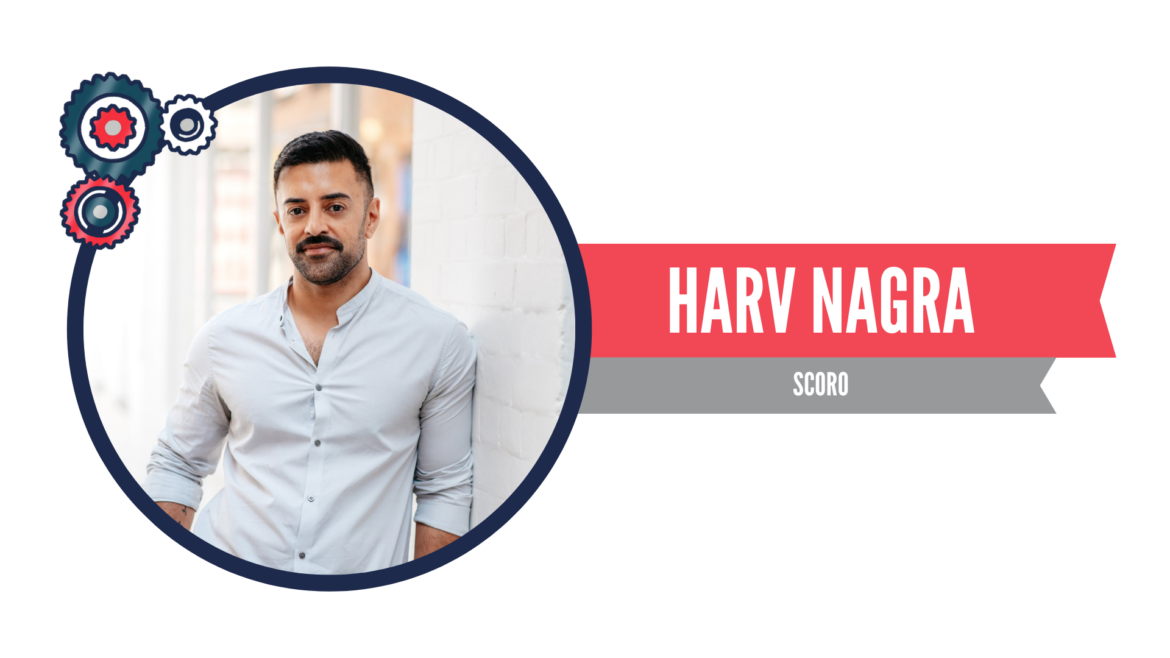
Experimenting with new tools and techniques is essential for agencies. It’s a way to stay on top of innovations that can transform the way we work for the better.
But when our agencies grow, we may also outgrow the tools that were good enough in the past. What’s more: they might actually be hindering your efficiency potential going forward.
The tools that we use for running and analysing our projects fall into that category.
“Agencies can end up working with systems that operate in silos” says Harv Nagra, head of brand communications at Scoro.
“They might quote in a spreadsheet, then they do their planning in another tool, then they time-track somewhere else, then export that data and put it back in Excel, and then invoice in something else.”
“It can get very manual – and very messy.”
At a certain stage, it’s fine to be doing this. You may even have some of these tools and spreadsheets talking to one another!
But there comes an inevitable point in an agency’s growth when having your data (mostly) siloed across multiple tools – and having to manually move or analyse information – becomes a bottleneck to your productivity.
That’s where Scoro comes in.
“What this platform does is consolidate what all those tools are doing – replacing those silos,” says Harv. “Moving more of the workflow into a single platform can unlock huge gains in efficiency, accuracy and visibility.“
👉 At Clockwork, Harv will take us through how Scoro can help bring ease and harmony to your tech stack, as well as your agency’s operations.
Could You Be Getting in the Way of Your Own Profitability?
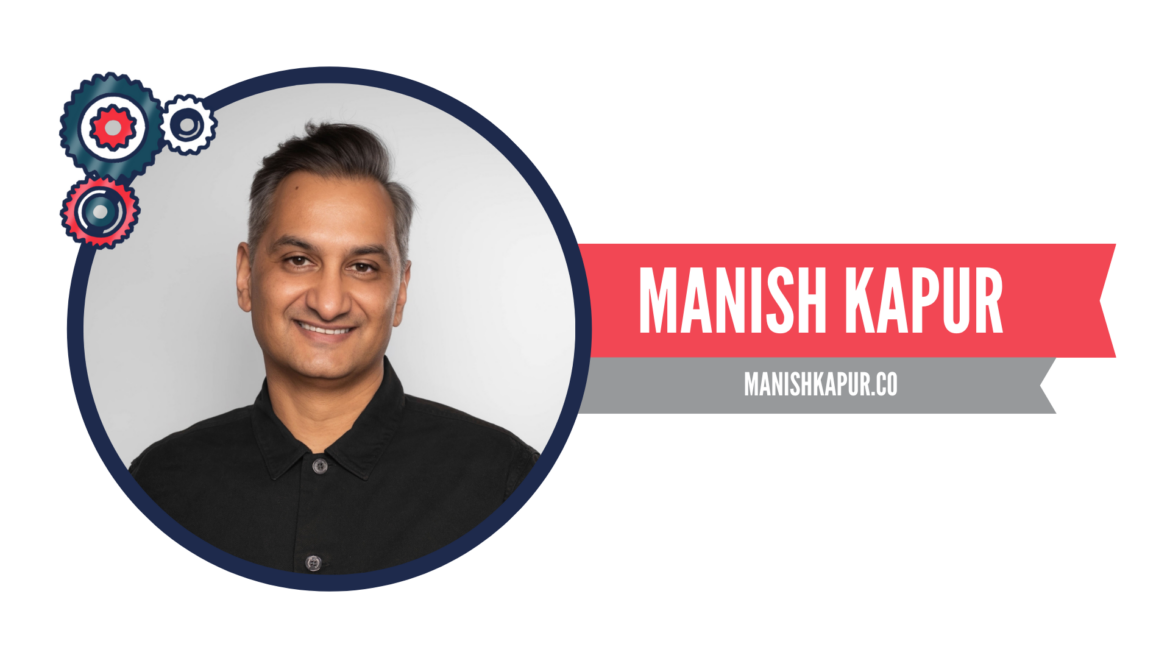
“Even though I work in operations, I don’t like processes. But I love best practice. And they are two very different things.”
Manish Kapur has spent the last 25 years working in agency operations. Now, he helps other agencies improve their operations from the top down, tapping into his own experience as a designer to understand what makes creative minds thrive.
But if there’s one thing he’s learned during that time, it’s that processes aren’t the be all and end all.
“I don’t want people to stop thinking for themselves. There are certain things that you just must do, to make sure you can deliver projects successfully on time and to budget. That’s best practice. But really, how you get from A to B – I’m flexible.”
“Operations is not black and white, operations is grey – and the best people in Ops are the ones that are super flexible.”
Manish says this is just one example of where agencies go wrong when it comes to their operations. What’s worse is when leaders think a ‘sticking a plaster over it’ approach will solve an operational problem.
Spoilers: it won’t.
“Normally, when you’ve got a particular problem, it’s actually a lot broader than you think it is,” says Manish. “One of the things I always get asked to address is profitability, and I only get called in when things have gone very bad.”
“So when it comes to profitability, scope creep is a massive problem. But why is that? It could be because you haven’t got the right people on the job. It could be you didn’t get a proper brief or because you didn’t define the scope of work. There are all these small little things that cause them to go over.”
Manish says that this is where AI tools will really lend a helping hand. They will tell you in advance where the missing information lies, so you can fix it before it becomes a real problem. Unfortunately, some manual effort is still required to solve it.
“Most agencies will try to mask chaos and inefficiency by bringing a new tool. They’ll say, ‘We need to solve our operations, so we’re going to bring in an agency system. But it doesn’t work, because it’s an add on. It’s just masking the core problem.”
A lot of the time, what you think is a process problem is actually a people problem: “The sad reality is, someone who was right for you three years ago may not be right for you now. So agencies have to be reviewing their staff at least every six months. Do you have the right people with the right skill sets within your agency to deliver the type of work you’ve got coming in at the right quality?”
👉 At Clockwork, Manish will take us through the small mistakes agencies often make when addressing problems within their operations – that can soon build up into a much bigger obstacle, preventing you from scaling. He’ll also be on hand during the day to take a prescriptive look at your agency’s ops during our operations surgery. If you’ve got a problem that you’re struggling to fix, Manish’s advice could be exactly what you need to hear.
Why You’re Struggling to Motivate Your Team – and How to Fix It
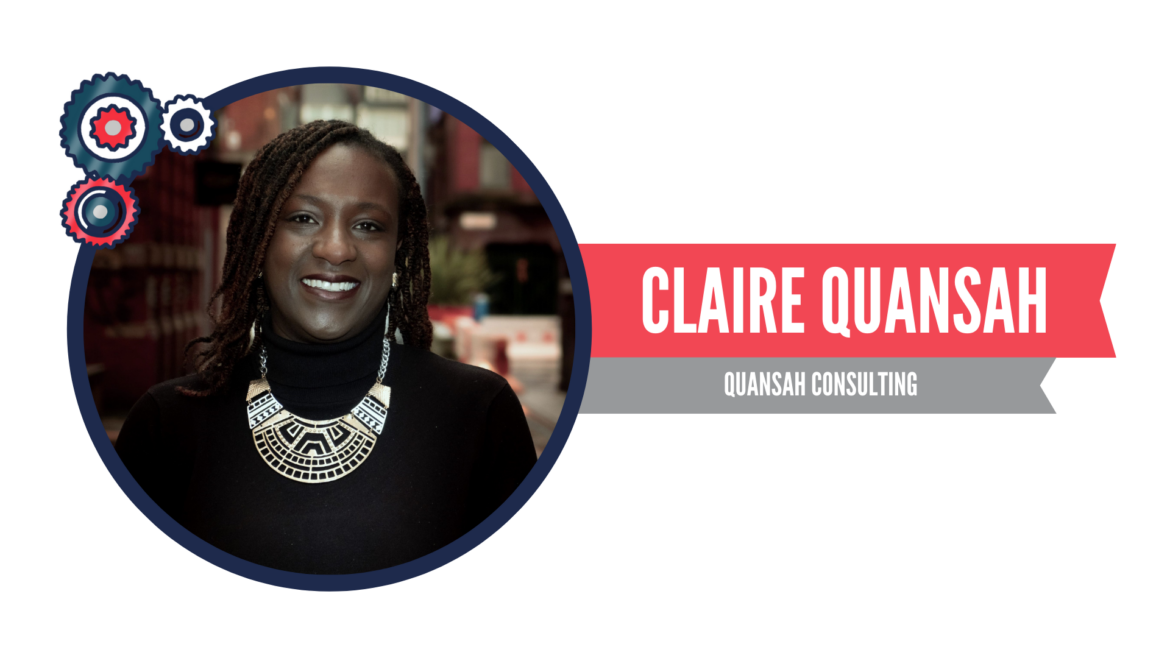
It’s Wednesday, 12:04pm.
You look over at your agency team, sitting at their desks, working away. They all look dejected, dazed and hunched at their computers.
They’re unmotivated, you realise. You’d never admit it but your first instinct is to be annoyed: why don’t they care as much as you?!
But you know, deep down, there is a deeper issue at play that you’re not addressing.
More and more agencies are facing this problem in 2024. External factors are seeping in and it’s affecting productivity. So how do you fix it?
“The important thing is transparency,” says Claire Quanash, founder of Quanash Consulting. “Be clear in terms of where things are with the business – what it is that’s being done to fight whatever the battle or challenge is, and what it means for them.”
“A long time ago, I heard about an agency where people didn’t know what was going on. All of a sudden, a whole team was told they were being made redundant, even though a couple of weeks prior, they were led to believe things were doing really well.”
“After that, people started leaving voluntarily.”
If your team isn’t motivated, it’s likely because they don’t have a reason to be. Ask yourself: Are they respected? Do they have a reason to care beyond the paycheque?
“Give trust and respect to be able to deal with important information,” says Claire. “Because being too closed about things doesn’t help anybody. You have to foster that from early on, so when the difficult times do come in, people have got that element of trust.”
👉 At Clockwork, Claire will be on hand to give some answers as to why your team might not be as motivated as you would like, and how you can go about fixing it. If you’re struggling to keep your team engaged and committed to your business’ growth – come along to get advice from someone who has been there and done it.
How Standardising Our Processes Reduced Team Overwhelm and Increased Productivity
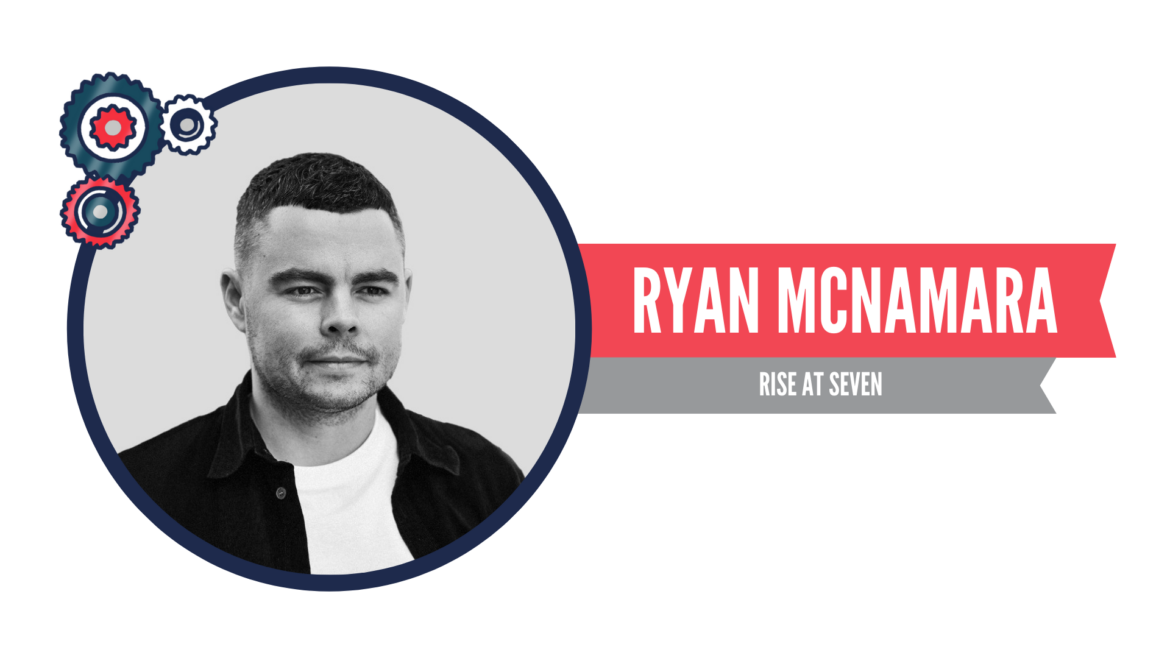
Ryan McNamara joined Rise at Seven last year as Head of Operations. With four offices across two continents and 80+ staff – he had his work cut out for him. But the first thing to address was how the agency managed their time and resource.
“When I arrived, the schedules were there, but they weren’t really viewed,” says Ryan. “People just knew they were on a project and then they would timesheet against it. So time sheets were reflective of what was in their schedules, even if that wasn’t actually what people were doing.”
Ryan comes from an engineering and dev background, where everything is ticketed out to the nth degree. So he’s used to having a particular way of doing things.
“Here, it’s a bit more fluid, because we are reactive to the markets and reactive to our clients and what they’re doing, which makes it tougher to schedule. So the realities of people’s calendars are not the realities of what we have in the schedule.”
What’s more, a lot of the team were preoccupied with things they had little control over – like utilisation targets.
“ I don’t really want the people doing the work worried about utilisation of the work at all, I just want them to be worried about doing the best job they possibly can with the time they’ve got to do something. So we stripped that out.”
Now, utilisation is the SMT’s responsibility – and only their responsibility. Ryan’s next challenge was communicating that to team leaders, and what it meant for them.
“I wanted to show them the value in if we do this, this is what will happen out of it. By showing them if we achieve a certain percentage, put in certain hours, then we will generate X revenue and Y profits,” Ryan says. “Just keep it simple. And that’s made a big difference. Because again, it’s less to worry about and easier to manage.”
Ryan also implemented a new weekly utilisation call with the SMT where they work through the team’s schedules together to balance any inefficiencies.
“With gross margin, the team doesn’t have any control over it. They don’t have control over overheads or wages or what the client is going to do. But actually spending billable time on work – they have control over that the majority of the time. So I’m just trying to give them power in ways that they can actually influence.”
“I want to get to a place where we feel comfortable that, while we know it’s not perfect, we have enough good information to make better decisions.”
Ryan and his team have already seen the impact of these changes – and the feeling within the business is a positive one.
“It feels like we’re doing more work now – and more billable work – than we were with 90-100 people. We’re not running as hot, things aren’t running too crazy, and it’s simply because we’re using our time efficiently,” Ryan says.
“I’ve tried to make people’s realities reflect in their schedules. The closer you get to that, the more opportunity you have to actually do good work.”
👉 In this session, Ryan will take us through how standardising his agency’s processes has reduced team overwhelm AND increased productivity across the board. He’ll tell us what he did, how it was communicated across the team, and the impact this has had on the business’ growth already.
How to Simplify Performance Management Into a Framework
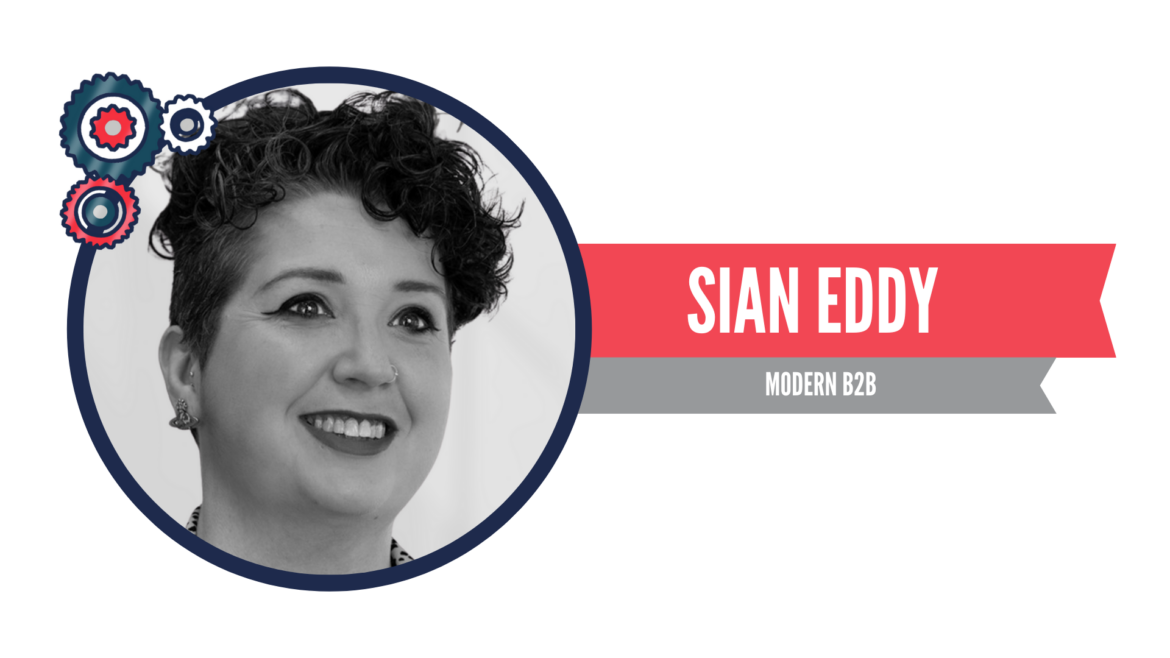
Agencies are obsessed with innovation and change. Their obsession, however, can often lead to overcomplications.
At least, it did for Sian Eddy, head of operations at Modern.
“We spent a large portion of Q4 and the beginning of 2024 going back to basics,” says Sian. “We have had a tendency to get excited by shiny and exciting things, but now we’re focusing on making sure our foundations are really solid.”
One of the problems they faced at Modern was around performance management. Sure, their staff were engaged, but that didn’t necessarily translate to performance.
Enter their home-brewed performance management framework: Performance at Modern (Pam, for short).
“We introduced Pam to bring clarity and transparency into our performance management processes,” explains Sian. “It’s designed to directly link an individual’s performance with their pay, aiming to motivate and reward our team members fairly and transparently.”
“We’ve made it a priority to ensure everyone is crystal clear about their roles and responsibilities. This includes not just what tasks they need to complete but also the behaviours we expect from them. It’s about aligning their actions with our company values.”
So what exactly is the framework?
- Set objectives – Each employee collaborates with their manager to set clear, measurable objectives that encompass both task-related outcomes and behavioural expectations.
- Define roles and expectations – Ensure every role has a detailed job description so each employee understands their role.
- Performance reviews – Employees undergo quarterly performance reviews, where their achievements and challenges in their objectives are discussed.
- Continuous feedback and reward – Continuous feedback mechanisms, facilitated through regular check-ins or digital tools.
- Adjust and align – ‘Pam’ then identifies opportunities for skill enhancement and career advancement, aligning individual aspirations with business needs.
“After the beta run of Pam, we gathered a lot of insightful feedback from our team,” says Sian. “The positive response was encouraging, but we also made several adjustments to ensure the framework was as effective and fair as possible.”
👉 At Clockwork, Sian will delve into how Modern’s new performance management framework has changed things for the better and set their team and business along the right path – could it work for you as well?
How to Balance Process and Creativity
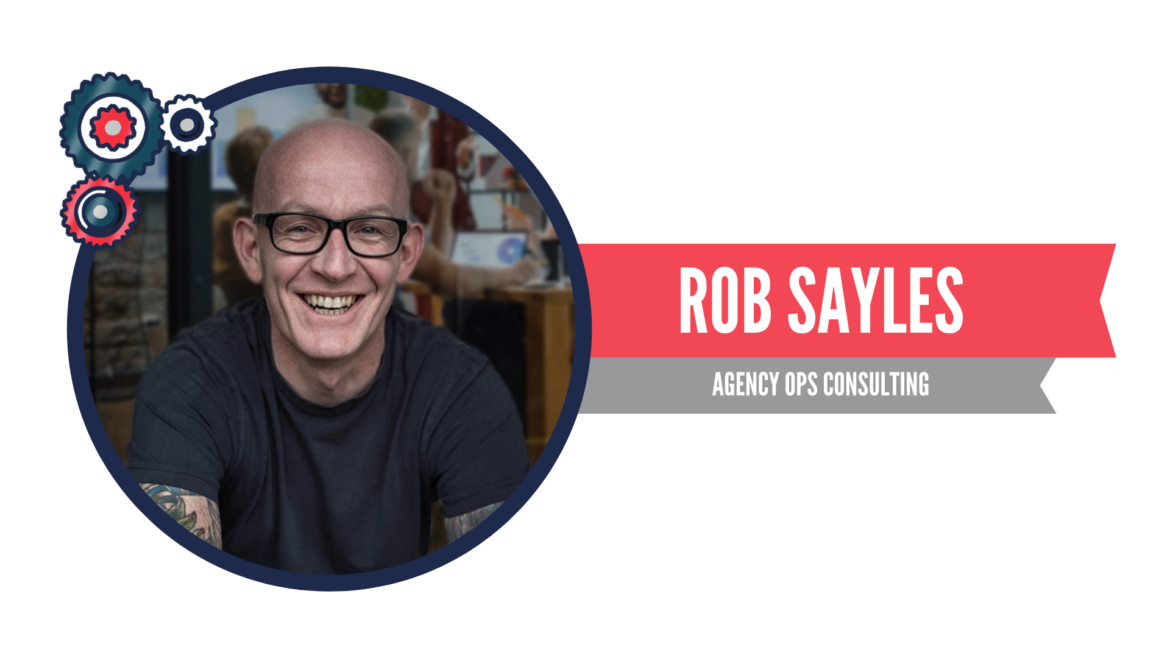
“Ops is a fundamental and integral part of running a business, but it’s massively underrated, massively under-represented and massively misunderstood,” says agency founder turned consultant, Rob Sayles.
Agencies are constantly wrestling with processes.
Many think that the minute they have to abide by certain rules, their creativity will be impeded.
Rob Sayles says: that doesn’t have to be the case.
“An agency will go and buy a tool or hire a consultant, and believe that then dictates the process,’ he says Rob Sayles. “It works for 80% of the projects, 80% of the deliverables, and 80% of the people, but… it misses a trick.”
“You end up either screwing your delivery; projects slip, clients lose faith, teams start getting frustrated and start quietly looking for other jobs, or people get disgruntled and start to upset the balance of the team.”
Rob is on a mission to shift the agency operations mindset. He wants to empower agencies to be creative and strategic whilst also being efficient and effective.
“It’s a really, really hard balancing act,” he explains. “If done right, processes aren’t a barrier to people’s creativity. Afterall, we’re all habit driven people and habits allow us to navigate through our daily life.”
People need structure, and an agency without centralised processes will naturally devolve into a messy environment. But often, when you speak to the agency people in the weeds, you’ll find that everyone has developed their own workflows – but none of it is centralised.
So how should you go about creating these processes? How do you make people stick to them?
“The best way is to work with the team to design a process that suits everyone,” says Rob. “The whole idea is understanding and respecting the different ways in which different people work, and then designing a system around them.”
“Standardising processes allows you to free up time and create space that you can use to be creative or do research – or even take some time off! All in the happy knowledge that you’ve delivered things on time and on budget.”
👉 At Clockwork, Rob will dive deep into how you can create operational processes and workflows for your team without causing detriment to their creativity. If you’ve been straddling this problem, come along to hear what Rob has to say.
How We’re Using AI to Make Our Operations More Efficient
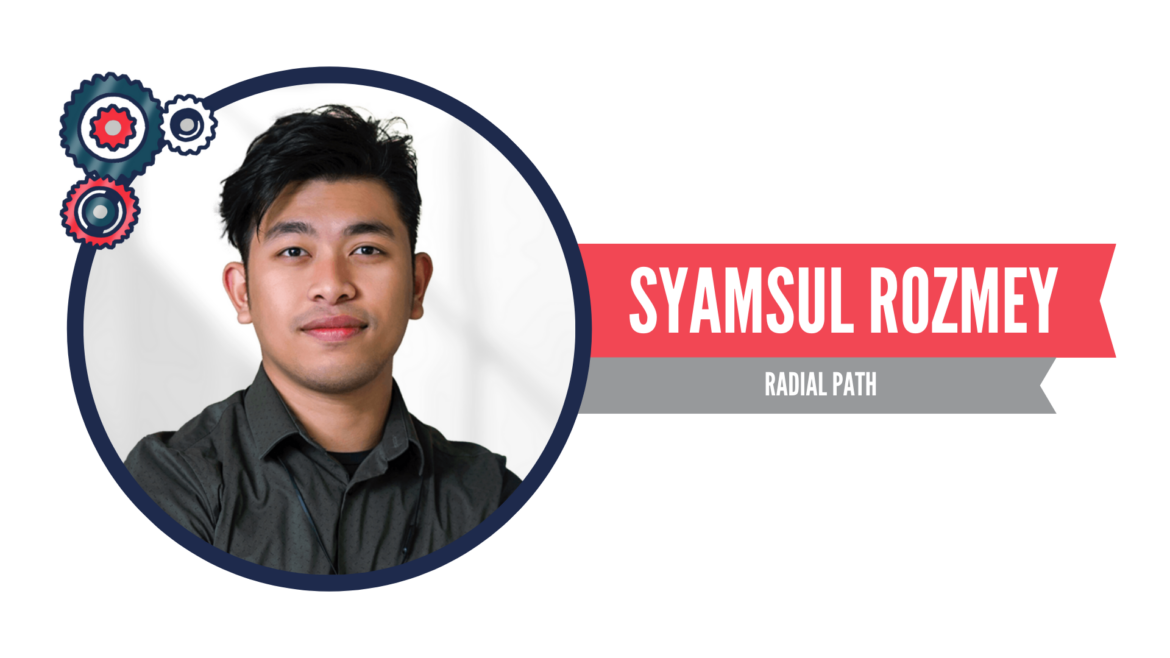
Radial Path spent 2023 getting their house in order – leading to one of their most profitable years to date. Now, in 2024, they’re focusing on growth and innovation, with AI firmly secured in their tool belt.
“2023 was a hard year for most businesses. We were fortunate, because our sector, digital infrastructure and telco, is very niche. So while other agencies were impacted by inflation, slow economic growth, labour shortages and supply chain disruption, our sector remained relatively stable,” says COO Syamsul Rozmey.
“But it still has a domino impact – and we were preparing for that to hit us. So we decided to take a slower pace, focusing on the sustainability of the business instead. Now, as other businesses look to make sure their house is in order, for us it’s the time to grow.”
Syamsul has always had a vision to get his agency’s ops running like clockwork – not just day-to-day delivery, but every area of the business. He uses the McDonald’s model as inspiration.
“With the McDonald’s system, it doesn’t matter who’s in it – if you order a double cheeseburger, you get a double cheeseburger. You can come in with a new product, but everyone who ordered that new product will get the same quality of service, the same speed of delivery, whatever they pay.”
Then when AI tech started to evolve, he knew this could be his golden ticket.
Syamsul began to think about where this tech could take the business. At the same time, they added some new team members, a few left, so he knew it was time to take a look at the agency’s operations.
“The first thing I did was assess the entire workflow of our company day to day and look at where we could improve efficiency,” he says. “Then we came up with a plan to test multiple tools to ingrain into our product services.”
“Things like improving our design ideation with Midjourney or Dall-e, instead of doing the iterations ourselves by hand. Already, that process has become much shorter – we just have to teach people the prompt engineering.”
“We’re also leveraging tools like Adobe Firefly, runwayML, and various SaaS products that have started integrating AI into their offerings.”
But you can’t forget the humans in all of this. And, like most, the humans were nervous at first…
“In an agency, that buy-in from the team is really important. And people were still really sceptical about AI, and how we were going to approach it.”
“If you try to enforce something, then it creates friction and you start to see a lot of procrastination. So for me, the best way to encourage the team and to create a culture for everyone where we’re sharing ideas on this, is if they are experiencing it themselves. ”
After reading the book ‘Atomic Habit’ by James Clear, Syamsul realised that he needed to create the habit of using AI tools, without making it mandatory.
“When Google search started to gain popularity, our default quickly became ‘let’s Google it’. That is our default way of problem solving. What we’re trying to encourage now is, if you have any problems, use an LLM to help you problem solve. We want to encourage them to use things like ChatGPT and Claude as the default.”
“We’ve also made AI tools easily accessible within our team’s daily workflow, integrating them into our project management software and communication channels. This way, team members can explore and experiment with these tools at their own pace, while still having the resources readily available when they need them.”
“It’s still not perfect, but we’re constantly testing and taking on feedback.”
👉 At Clockwork, Syamsul will take us through his journey of implementing AI tech to help increase productivity and operational efficiency – and how this has helped propel his agency’s growth beyond the industry average. If you’re struggling to get your team on board with this kind of change, Syam’s story is worth listening to.
How To Get Your Team on Board With Change

Agencies have faced an enormous amount of change in the past 12 months. Many are being forced to adapt – to new tech, longer sales cycles, external economic factors – and adapt quickly. But they’re facing friction from teams.
How can you as their leader implement change that the business needs, whilst also thinking about what your people need?
Nine van Strydonck, head of operations at NOVOS, recently faced this problem.
“Over the past two years, we’ve been changing our internal project and task management workflows,” says Nine. “But most of the company has been overwhelmed with the amount of change. We kept getting the feedback: too much change.”
“From my position, it was difficult because some of the change I’m in control of, and some I’m not.”
NOVOS is an employee-owned agency, so the aim is to make changes in favour of the employee’s best interests and to get employees involved in idea-generation and giving feedback. This created even more pressure for Nine to roll out changes smoothly within the team.
Around the same time, Nine began learning about the theory of change management. One of the key things she discovered through this was the importance of preparing the team for change. One way to do this is to follow the change management model of ‘Head, Heart, and Hands‘:
- The Head – “If you want to introduce a change, you need to ask how that will affect people; do they understand the why and the what behind the decision?”
- The Heart – “How will they emotionally react, and how can you support them? You need to understand the reasons people fear change.”
- The Hands – “This is the practical side. What do they need to be involved? What documentation or education do they need to take the change on board?”
“We’ve standardised our task management platform, ClickUp, across the agency, and it was a long process. When we first began, I prepared a deck for the entire company explaining it all; the response to that was fairly positive. But with that being said, I’ve since learned to gather more feedback iteratively and not make assumptions.”
“It was a lot of learning for all of us. For me, getting buy-in from a senior perspective before rolling out change is very important.”
Nine believes that agencies can often rush into change, instead of taking a moment to question what the end goal of the change is and how it will improve things for the team and for the business.
Another tactic she picked up for this along her journey was applying the concept of ‘minimum viable product’.
“Instead of spending months building a massive change, we build a draft of it first, or a rudimentary version or proof of concept, and then show it to our team and say, ‘Hey, is this the change you want?’. It’s not formalised yet, but the concept is to try and get the feedback as early as possible to avoid the situations where, three months down the line, someone says, ‘This isn’t at all what I wanted’, and everyone hates that change.”
Ultimately, Nine’s hard work is paying off: “We have less feedback in our engagement surveys about workload being an issue. And I hear people saying work is more organised.“
👉 At Clockwork, Nine will be delving into her how she’s managed to get her team on board when implementing operational changes at NOVOS. She’ll explain some of theory she’s learned along the way, as well as the processes she’s put in place to help implement change in the future.
How Should Your Agency Be Structured?
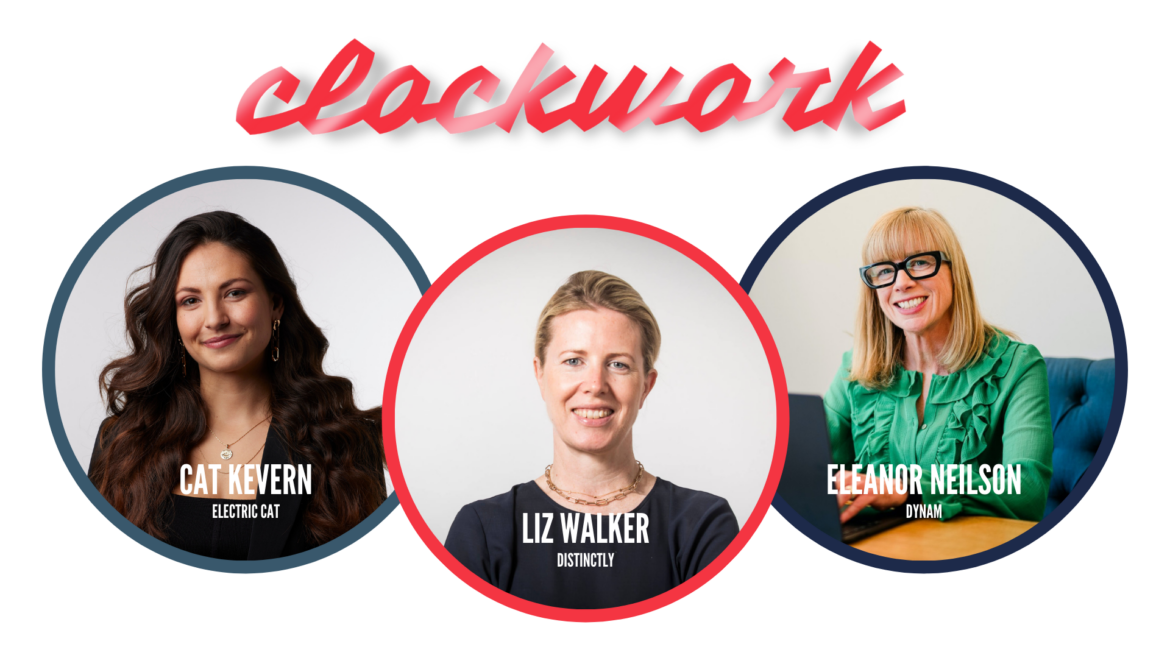
If a city wishes to remain intact then one particular thing needs to be solidly planned out: its infrastructure.
Without a solid structure in place for its future, it could fall apart at the slightest touch.
The same goes for agencies. As time’s arrow marches forwards, you need to ensure you have structures in place so that you don’t crumble in the future.
At Clockwork, we’ll be bringing in three voices from different types of agencies to discuss how they’re planning their structures and processes going forward.
Meet your panellists:
Liz Walker – commercial director at Distinctly
If any business intends to grow and become future-proof, then they need to have the right senior management and leadership roles in place.
At Distinctly, they follow a ‘POD’ structure. So it was important for them to build out senior leadership teams with experienced people who could hit the ground running.
“We knew there was a lot of opportunity for growth, so long as we had the right people in the right seats,” explains Liz. “And it was very much a learning curve understanding our requirements; we spoke to a lot of people that we just knew weren’t quite right – people who had good track records but just didn’t fully meet the brief.”
When building out a senior leadership team, the candidates need to have the right mix of leadership skills, expertise, and an entrepreneurial mindset.
Distinctly managed to do it and brought in experienced leaders from the outside, whilst also promoting someone internally.
“It took us quite a bit of time to identify the right candidates, and then once we found the right people, it moved really fast.”
Cat Kevern – director of Electric Cat
Similar to Liz, Cat needed to bring an expert on board for her agency, but in a rather different context. Electric Cat is made up of mostly freelancers, and with that comes a bit of a problem: how do you properly plan for the future?
“We’ve just brought Emily into the business, who is a super experienced consultant,” says Cat. “Together we’ve been looking at how we can improve our internal systems to streamline our processes and include some safeguards. So far she’s helped me revamp our onboarding process for clients.”
Operationally, this was a genius move – sometimes you just need an outside point of view to really get your head around your own agency’s processes, as well as implementing new ones.
“We’re also looking at business growth and the team dynamics,” explains Cat further. “Emily’s been working on a roadmap to make sure that I’m ready to bring on another full time person, looking at the business quite holistically.”
They’re also encouraging their freelance team members to help out and suggest improvements.
“We’ve put a ‘bright ideas’ system in place,” says Cat. “Team members just submit a form if they have any idea about how we can improve anything in the business, and they’ll get a little bonus for it. The Bright Idea form was inspired by the Kaizen method, adopted by Toyota in Japan- meaning continuous improvement.”
Eleanor Neilson – joint managing director at Dynam
About a year ago, Dynam made the decision to become employee-owned . It was a brave decision, one that would change the trajectory of the agency and help sustain them.
“We’ve been evolving and developing over the years,” says Eleanor. “We needed to think about what we could do to future proof the business going forward, and the EOT model just made sense to us.”
From the outside looking in, it seems like it could be a tricky transition, breeding a lot of complicated confusion… but is it?
“It was actually relatively straightforward,” reveals Eleanor. “Obviously, it took a while for everyone to get their head around it, and it’s coming up to our first year in June, so it’s still early days. It’s pretty much business as usual. But overtime, I want to gradually take more of a step back and let the team take ownership of it.”
👉 If you’re curious about how your agency should be structured in the future and the different ways in which others are doing it, this discussion could offer you the answers you’re looking for.
Agency Operations Surgery
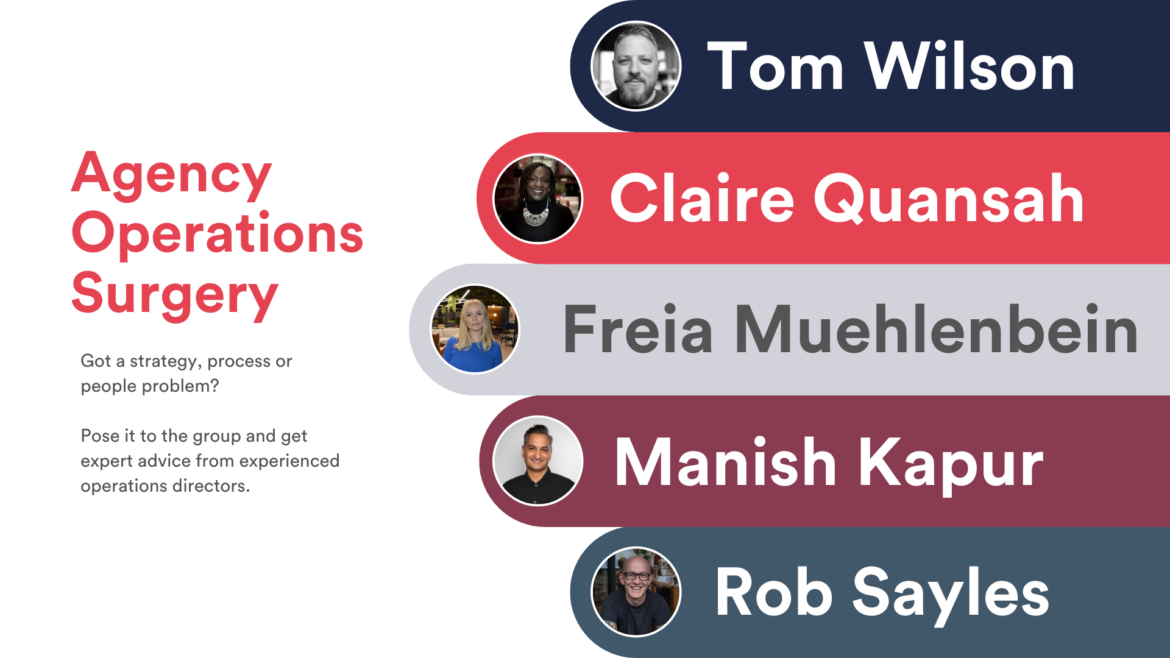
During the event, we’ll have FIVE operations consultants on hand to help you solve your agency’s people and process problems in our ‘Agency Operations Surgery’.
Here’s how it works:
- During the event, you will have a choice to either attend one of our breakout sessions, or take part in the surgery. This will happen FOUR times throughout the day.
- In the surgery, we will have one or two operations experts, ex-directors and consultants onstage to help diagnose and offer solutions for a particular problem.
- We’ll pick an agency delegate to come down on stage, explain their problem, then our ‘experts’ will give their advice on what they think you should do. (If you’d like help with your problem but want to remain anonymous, fill in this form and we’ll pose the questions on your behalf.)
- You can either submit your operations problem before hand (this could guarantee you a slot!) or simply raise your hand during the surgery when we ask for volunteers.
Maybe your staff turnover is high but you feel you’ve already tried everything to fix it. Or perhaps your cash flow is poor and you need to inject funds into the business quick! You might even want to launch a new service or implement a new tool – but have no idea how to roll it out.
Whatever problem you’re facing – chances are, our experts have solved it before.
Our resident experts are:
Tom Wilson – People X Systems
Tom Wilson is an experienced agency leader skilled in agency operations, with two decades of hands-on experience expanding What’s Possible Group from a team of 5 to 200 staff, with a turnover of over £150 million.
Tom’s journey has seen him tackle growth, decline, acquisitions, culture changes, building teams, overhauling tech, cost savings, office refurbs, revitalisation of underperforming units, MBO’s, changes in directions, tactics, strategies, and a whole host of other experiences that come with building a big agency. These experiences provide with not only versatility but a profound understanding of the dynamics within an agency ecosystem.
Tom’s operational expertise covers the entire spectrum of agency functions – having led various disciplines including HR, Finance, Sales, Marketing, Technology, Production, and more. Central to his approach is a deep commitment to people and systems, which he considers the foundation of successful operations within any agency.
“I can quickly unpick problems faced by agencies across their business and avoid some of the traps waiting for them as they grow.“
Claire Quansah – Quansah Consulting
With a career spanning two decades’ in PR and communications agencies, including Havas and Social, Claire Quansah has extensive experience in client relations, campaign management and team leadership. A former agency operations director and head of client & business development, she knows what makes a smooth operating agency.
Through Quansah Consulting, Claire works with growing agencies to ease the common growing pains that are slowing them down. Whether it’s a lack of clear processes, inconsistency in client services, or the other ‘stuff’ that leaders never get around to, she helps them to improve quality, consistency and efficiency in their ops.
Whether its training and workshops, or going consultancy, Claire works closely with agency leaders and their team to make sure they have the right skills and systems in place so they can focus on their core work i.e the fun stuff! As well as being an avid supporter of nurturing talent, Claire is passionate about improving diversity in the creative and comms industry, playing an active role in a number of initiatives and programmes which support comms professionals with their career development.
Freia Muehlenbein – Be Reyt
Freia Muehlenbein is a growth advisor with 15 years of experience in growing and optimising agencies, and seeing strategic plans through to the implementation of positive, embedded changes and ways of operating.
Previous to running her own consultancy, she worked agency-side for 12 years – growing her own digital content & PR team from 0-100 people – and was responsible for delivering the strategy and change programs for one of the most successful 150-strong digital marketing agencies in the UK.
Freia loves to bring calm to chaos, helping agency leaders streamline their operations while enhancing team culture and productivity. Her approach to growth involves optimising every aspect of the business – new business, structures, processes, systems, and client management – to ensure lasting success. With a qualification in Agile Change Management, Freia designs practical delivery plans that lead to consistent and effective growth.
“I know how tough agency operations can be. Just remember, you’re not alone – support is always here.”
Manish Kapur – Consultant
Manish Kapur is a creative operations consultant who has worked in the creative industries for over 25 years, helping agencies increase efficiency and profitability by implementing growth strategies, establishing productive teams, and reviewing operations. Before founding his consultancy, Manish held the position of ‘Executive Operations Director’ at a leading global design agency, so he knows a thing or two about adapting to ever-changing market trends.
Manish is renowned for his ‘deep-dive’ approach to agency challenges – his strategy includes conducting comprehensive audits of agencies to pinpoint inefficiencies, and tailoring strategies to promote sustainable growth.
His consultancy prioritises four crucial pillars: leadership, financial management, people, and processes, aimed at fostering a collaborative and inclusive agency culture that drives client satisfaction and retains top talent. His methods have consistently proven effective in transforming creative agencies into profitable, well-oiled machines – and his unique blend of creative background and operational expertise makes him a sought-after liaison for agencies aiming to thrive in a competitive environment.
Rob Sayles – Consultant
Rob Sayles is an ex-agency founder and Operations Consultant with a rich agency experience spanning over two decades in the digital industry. Rob launched his career by founding his own agency – Flint Agency – in 1996, then guided it to prominence until his successful exit in 2023. Throughout his career, Rob has collaborated extensively with numerous UK and US agencies, focusing on optimising operations and driving sustainable growth.
Passionate about transforming agencies from startups to industry leaders, Rob employs a powerful, tailored 4-step framework to delve deep into the nuances of operations, financials, and strategic planning. His methodical approach aims to unlock an agency’s full potential, merging profitability with creative prowess.
Dedicated to setting agencies up for long-term success, Rob not only enhances day-to-day operations but also prioritises long-term strategic oversight. With his expertise, agencies are equipped to not just grow, but thrive, fostering environments that balance creative innovation with operational excellence.
To submit your agency to be spotlighted beforehand, either fill in this form or get in touch with Sophie.
